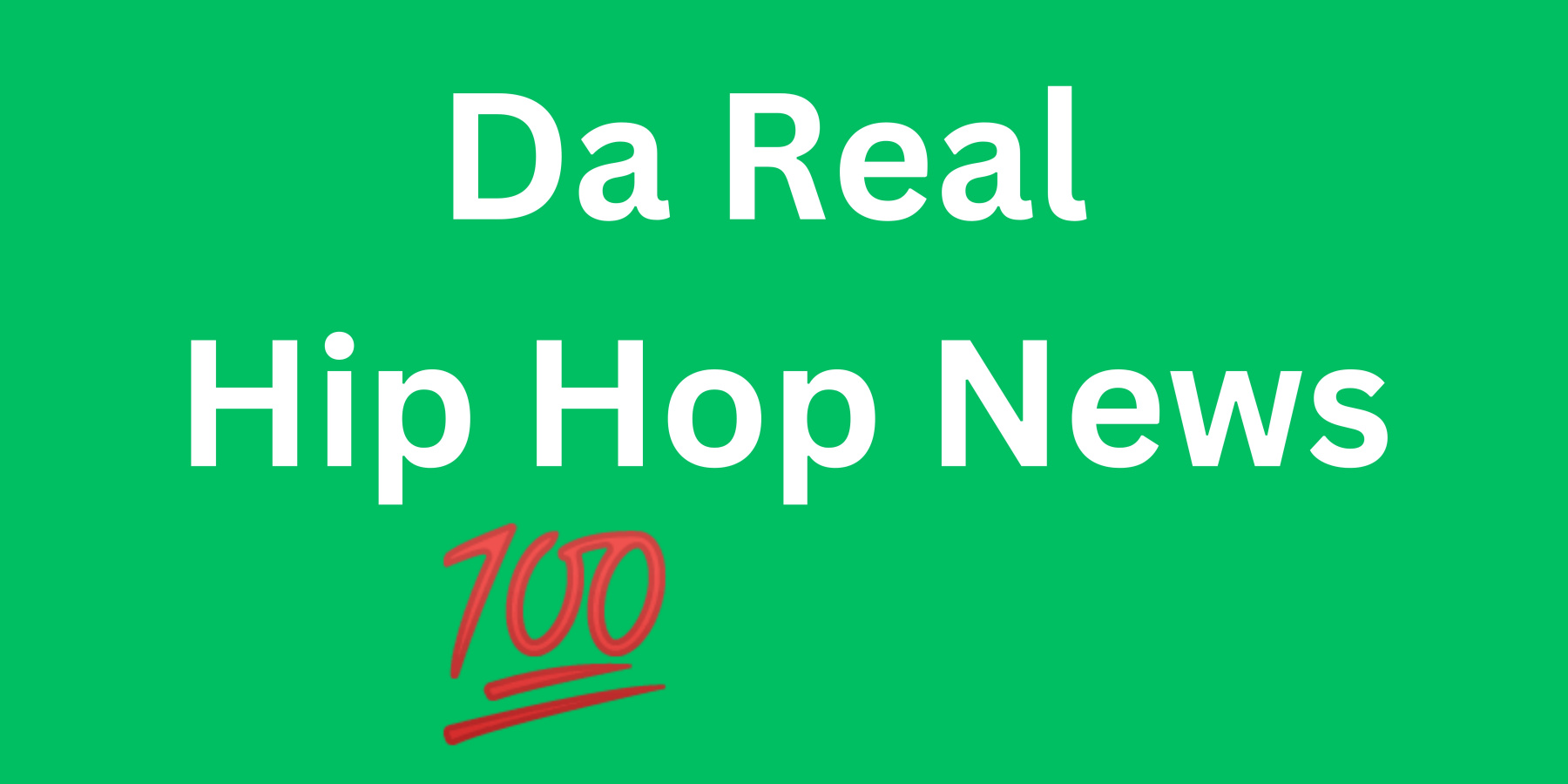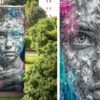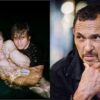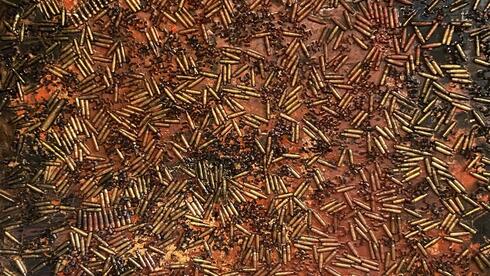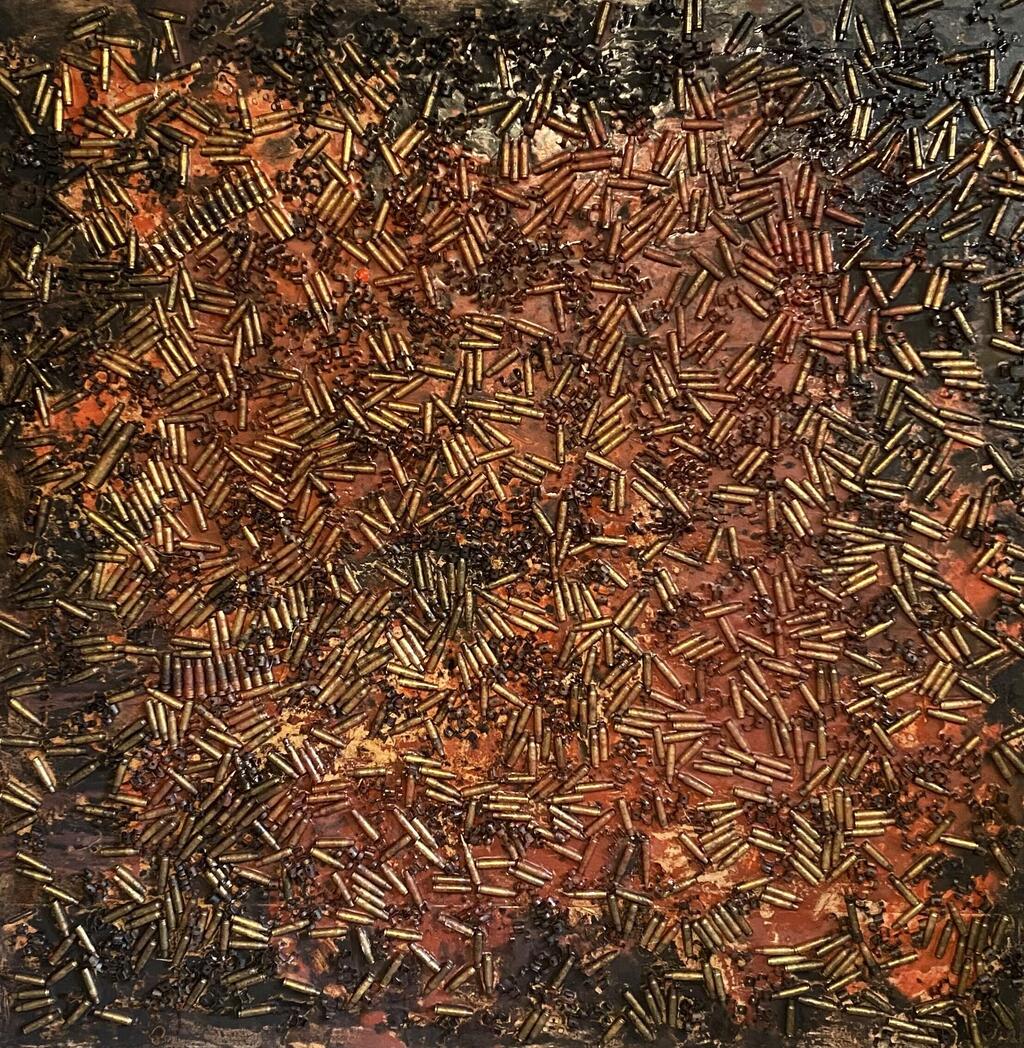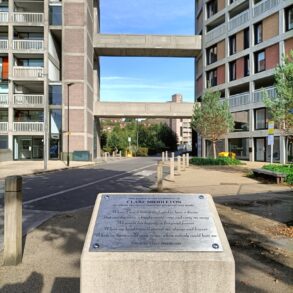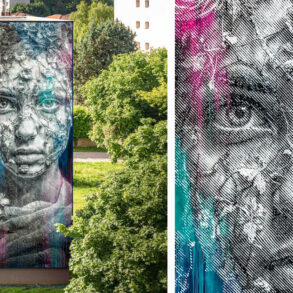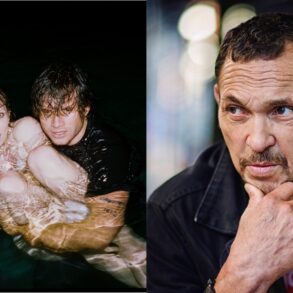Simon Durban, once the right-hand man to the world’s most elusive street artist, Banksy, is now starting over in Israel—as a curator.
Durban, 54, was born and raised in London to a Jewish family. A divorced father of three—aged 25, 22, and 18—he is currently dating an Israeli woman and in the process of making aliyah. Since the October 7 Hamas massacre, he says he’s felt a renewed connection to his Zionist identity.
His first Israeli exhibition, 07SH10AH23, opened on Holocaust Remembrance Day in a small gallery on Bar-Yohay Street in Tel Aviv. It explores the trauma of October 7 and features works by more than 20 Israeli artists, including hostage survivor Moran Stella Yanai. But the exhibit is not a photo montage of the massacre, Durban told ILTV News. It’s about how artists and their work have evolved since the attack. The show blends raw grief with creative resilience.
“It’s kind of like a rebirth for me,” Durban said. “As somebody from the Diaspora who knows Israel, who knows Israelis… If everyone has like 100 candles inside them, I’d say at least 10 are extinguished in every Israeli. And it’s so clear to me, I think definitely for the artist, the therapy of creating and expressing themselves.”
EXHIBITION 07SH10AH23
(קרדיט: ILTV)
For Durban, the exhibition is also a personal statement. He describes his Zionism as something that runs through his veins. He first visited Israel at age 18 and says he knew then the country would always be a part of his life.
For 15 years, Durban served as the business manager to Banksy, the anonymous graffiti artist known worldwide for his subversive and politically charged street art. Despite global fame, Banksy has never revealed his identity.
Durban visited Israel several times with Banksy, who is not Jewish, on politically driven trips to the West Bank and Gaza. Banksy famously painted on the separation wall in 2005 and in Bethlehem in 2007. In 2016, he even opened the Walled Off Hotel adjacent to the barrier.
During the 2014 Gaza war, Durban returned to Gaza with Banksy, who planned to paint in dangerous, untouched areas. Durban recalled feeling uneasy crossing the Erez checkpoint, especially after witnessing Hamas fire rockets indiscriminately at civilians.
“I felt like I was betraying my people,” he said.
That experience, Durban said, eventually inspired him to turn his creative energy toward Israel.
“The work I did with Banksy kind of almost pushed me back into a feeling of wanting to give something to Israel, because I felt as if I’d done so much in the West Bank and for Palestinian people, if you like, via his work,” he told ILTV. “So, I’ve just been anxious to give something back.”
“With Banksy,” he added, “we were working on some hard stuff in some hard areas. But now I feel I’m able to present something for Israel.”
Durban met many of the artists featured in the show nearly a year ago and began conceptualizing the exhibition. Gaining their trust wasn’t easy, he admitted.
“Originally it was meant to be a kind of October 7 commemoration exhibition,” Durban said. “And the more I played with this idea, the more I kind of heard other things in the background that were doing something similar, and I really just didn’t want to repeat or keep churning the same story or the same narrative.
“But what was really apparent to me was just how much Israelis had changed since the seventh, so I decided to try and explore how Israelis had changed. It felt to me as if something very deep in their psyche had changed following the atrocities. So I wanted to give artists a platform to present work with that narrative, rather than paint October 7 or sculpt October.”
As artists began to share their stories, the exhibit started to take shape.
There are tank commanders who also create art. Photographers whose studios were destroyed. A hostage.
“Everything just kind of came together at the perfect time, and I feel like we have a very strong body,” Durban said.
One of the featured artists is Jonathan Cuperman of Tel Aviv, who contributed several works. His piece “Eyes” is a response to the silence he received from his Arab-Muslim friends after October 7.
“They didn’t hear anything. They didn’t see anything,” Cuperman told ILTV.
He said he reached out to one Muslim friend, who accused Israel of creating the October 7 massacre in Photoshop.
“So I started to understand the difference between friends and interests,” Cuperman said.
“Eyes” incorporates a 100-year-old Arabic wedding mask, surrounded by the eyes of 13 friends, crafted from glass, wood, leather, copper, and more. The work is partially covered by fabric and expresses, for Cuperman, deep disappointment.
Another artist, Osnat Ben-Dov, lost her exhibit “The Shadow of a Passing Bird” when it was burned down in the Be’eri Gallery on October 7.
“We were talking in this exhibition about that things are not stable. One minute here, and one minute after they are done. We didn’t know, of course, that’s what was going to happen,” Ben-Dov said.
After the massacre, she began photographing live birds instead of shadows.
“I really wanted to take photos of live birds,” she said.
But her most powerful work in the exhibit is a photograph of a vibrant blue-and-white parrot lying dead on a white blanket.
“I found this parrot that was very strong because of the color and how he was very pretty, even though he was dead,” she said.
Another contributor is Matan Sokofsky, a Jerusalem-based artist who has spent most of the war serving in the reserves as a tank commander.
“I’m an artist, not a soldier,” Sokofsky said. “The situation in the Middle East makes a lot of people here – it makes them have to live a double life. So I’m actually an artist, and just being an artist in a war zone for so long, we look at materials.”
He collected bullet casings from the field in Gaza and brought them to his studio to create an untitled piece. The work explores the tension between beauty and brutality—between blooming life and open wounds.
Durban said the war was a turning point for him.
“It’s absolutely true that October the seventh made me a Zionist,” he said. “I’m not the first person to say it, and I won’t be the last.”
But his mission goes beyond personal identity.
“I want to tell the world that we have a huge amount of incredible artists here who deserve a wider platform and deserve to be seen internationally and collected internationally,” he told ILTV. “We have a strong story – a story of resilience and remembrance.”
This post was originally published on this site be sure to check out more of their content.
